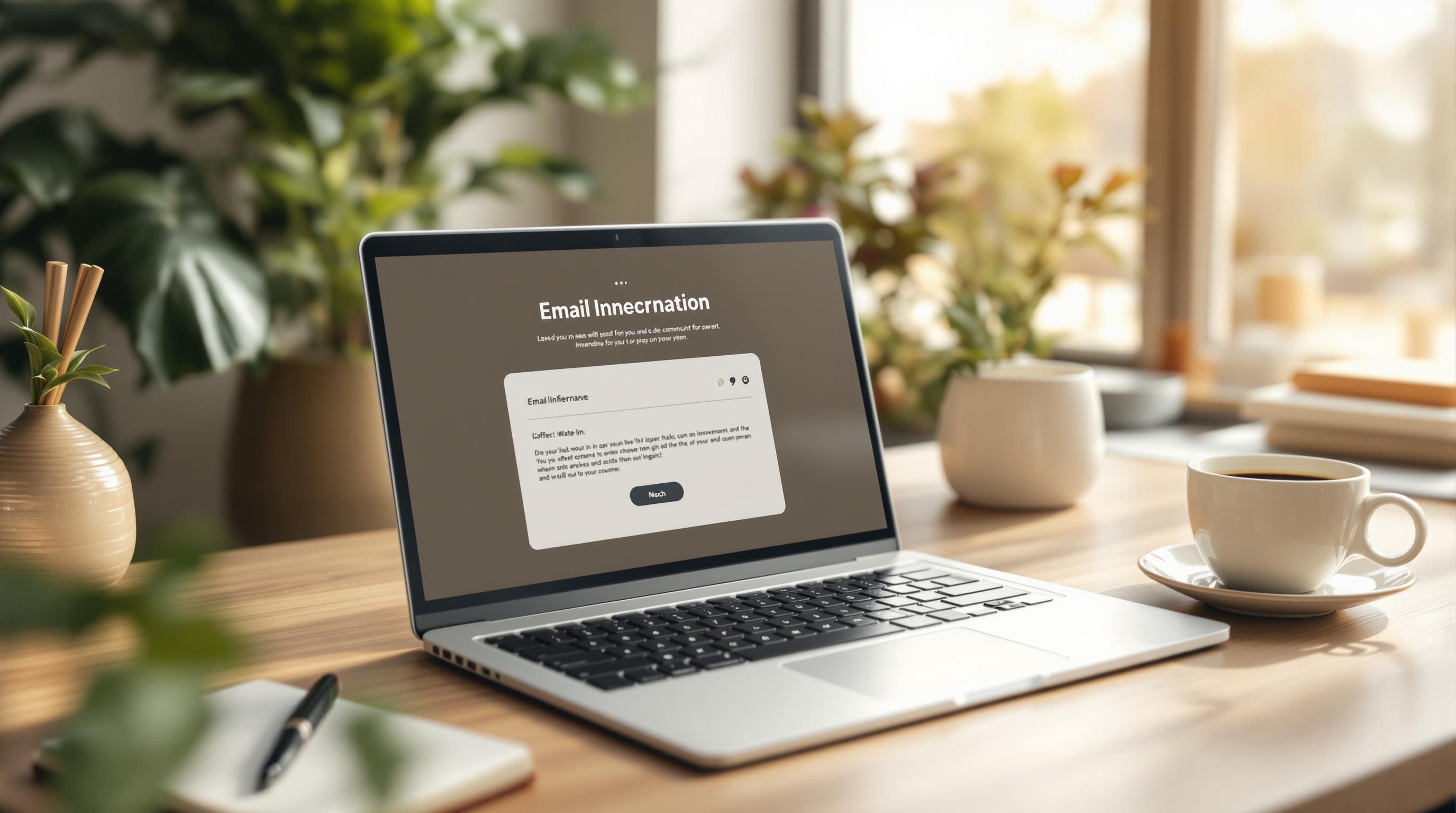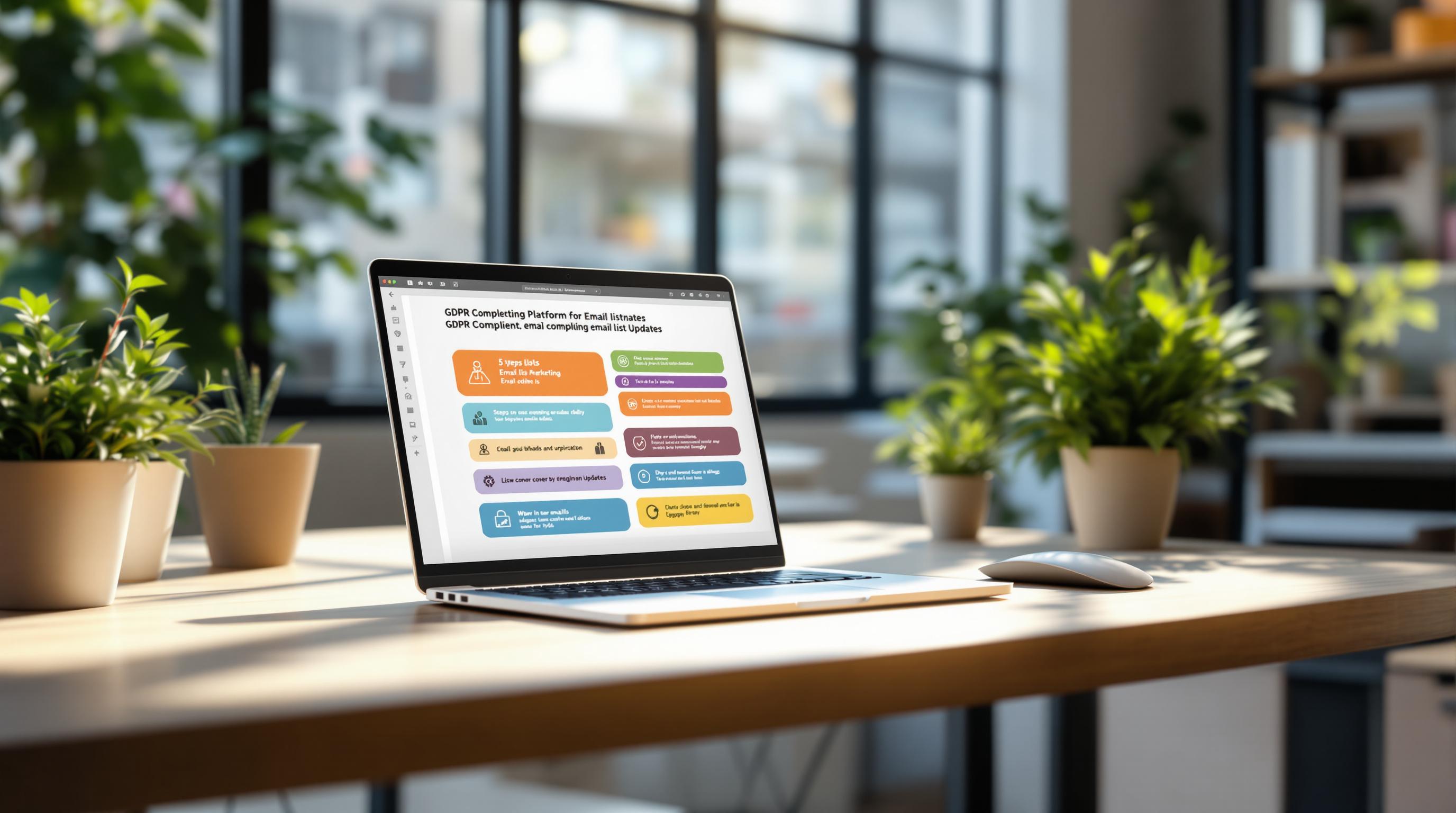Email feedback loops (FBLs) are essential for improving email deliverability. They notify senders when recipients mark emails as spam, helping maintain sender reputation and ensuring emails reach the inbox. Here's why FBLs matter:
- Protect Sender Reputation: Alerts about spam complaints allow quick action to reduce issues.
- Improve Campaigns: Use insights to refine content, audience segmentation, and sending practices.
- Clean Email Lists: Remove complainers and inactive users to prevent future complaints.
Quick Overview of FBL Benefits:
- Immediate Spam Alerts: Act fast to address complaints.
- Better Engagement: Tailor campaigns based on feedback.
- Stronger Deliverability: Maintain a good reputation with ISPs.
Setting up FBLs requires domain authentication (SPF, DKIM, DMARC) and registration with ISPs. Regularly monitoring feedback loop data ensures ongoing email success.
How Email Feedback Loops Function
Email feedback loops are a system where ISPs and email senders collaborate to track complaints and improve email deliverability. This process involves proper setup and regular monitoring of complaint data to keep email performance on track.
Setting Up Feedback Loops
To set up feedback loops, senders need to verify domain ownership through protocols like SPF, DKIM, and DMARC. They must also register with major ISPs and configure their systems to handle complaint reports. These authentication steps ensure that feedback loop data is collected accurately and comprehensively [2].
Understanding Complaint Reports
Complaint reports offer valuable insights to tackle deliverability issues. They typically include:
| Report Component | Description | Purpose |
|---|---|---|
| Recipient Details | Email address of the complainant | Helps remove them from the list |
| Complaint Type | Spam or abuse classification | Identifies the nature of the issue |
| Message Data | Email headers and content | Provides details for analysis |
Advantages of Email Feedback Loops
Email feedback loops (FBLs) offer valuable insights for marketers aiming to improve email deliverability and maintain a strong sender reputation. Here’s why FBLs are so useful for email marketing.
Protecting Your Sender Reputation
FBLs alert marketers to spam complaints, allowing quick action to lower complaint rates and improve list quality. Research from Return Path highlights that using feedback loops can result in a 70% drop in spam complaints [4].
By regularly reviewing FBL data, marketers can identify problem areas, clean up email lists, and fine-tune content. This helps ensure emails are well-received, reducing the chances of being flagged as spam.
Improving Email Campaign Results
Feedback loop data can guide marketers in tweaking their campaigns. Whether it’s refining email content, better segmenting audiences, or adjusting sending practices, these insights help boost engagement. Higher engagement rates also show internet service providers (ISPs) that your emails are relevant, which can improve deliverability.
For businesses sending large volumes of emails, tools like Mailtrap work with major feedback loops to simplify complaint handling and improve deliverability [4]. This organized approach helps ensure ongoing success in email campaigns while maintaining a good reputation.
Using FBLs effectively requires regular monitoring and a thoughtful strategy, which we’ll dive into in the next section.
Effective Use of Feedback Loops
Keeping Email Lists Clean and Updated
Maintaining a clean email list is crucial. Remove inactive subscribers - those who haven't engaged in 6-12 months - to lower spam complaints. Use double opt-in verification for new subscribers, ensuring they genuinely want to receive your emails. Also, leverage feedback loop data to quickly remove anyone who marks your emails as spam [1].
Improving Email Content and Personalization
Tailor your emails to match what your audience cares about. Personalization goes beyond just adding a name - it involves:
- Behavioral and Interaction Data: Adjust content based on how subscribers interact with your emails, browse your website, or make purchases.
- Preference Data: Segment your audience based on their stated interests to send more relevant emails.
- Engagement Level: Modify email frequency depending on how actively subscribers engage with your content.
Feedback loops provide the insights needed to make these adjustments and keep your emails relevant [1][3].
Managing Feedback Loop Data Effectively
Review your feedback loop data regularly to spot trends and address problems quickly. Pay attention to:
- Complaint rates for different types of emails.
- Timing patterns in spam reports to identify potential issues.
- Segment-specific feedback, which can reveal how different groups react to your content.
- Engagement metrics to track changes and refine your strategy.
sbb-itb-8abf799
Tools for Improving Email Deliverability
Having the right tools can make all the difference when it comes to managing email deliverability. They work alongside feedback loops to keep your email lists clean and help ensure your campaigns land in the inbox.
Email Extractor Tool - Simplify Email List Management with AI

Tools like the Email Extractor Tool, when paired with feedback loops, make email list management much easier. This tool uses AI to find and extract valid email addresses automatically, helping you maintain accurate and compliant lists. It also integrates smoothly with other systems, making list management and feedback loop usage more efficient.
Here’s how its features support better deliverability:
| Feature | How It Helps Deliverability |
|---|---|
| AI-based email extraction | Finds and validates email addresses automatically, ensuring list accuracy |
| Easy integration | Connects with email service providers and feedback loop systems effortlessly |
| Scalable design | Works for businesses of all sizes to maintain email standards |
By integrating with feedback loop systems, this tool can:
- Track engagement patterns to keep email lists relevant.
- Monitor key deliverability metrics across various audience segments.
- Automate list updates based on feedback loop insights.
For best results, pair email extraction tools with monitoring platforms like Mailtrap. Mailtrap offers detailed analytics that can help you fine-tune your email strategies [4]. When choosing tools to improve deliverability, look for features such as:
- Compatibility with major feedback loop systems
- Real-time monitoring and alerts
- Built-in list cleaning and validation
- Comprehensive analytics and reporting options
Email Feedback Loops: A Quick Recap
Email feedback loops are a powerful way to understand how recipients interact with your emails and address any complaints they might have. By using these tools, marketers can improve email deliverability and refine their strategies based on real-time insights.
Benefits of Feedback Loops
Here’s how feedback loops help improve email campaigns:
| Benefit | How It Helps Deliverability |
|---|---|
| Immediate Alerts | Get notified about spam complaints quickly, so you can take action fast. |
| Cleaner Email Lists | Removing complainers reduces the chances of future spam reports. |
| Better Reputation | Fewer complaints mean a stronger sender reputation. |
| Smarter Campaigns | Use feedback to tweak your content and strategies for better results. |
Feedback loops aren’t just tech tools - they show respect for your audience and adherence to email best practices. Pairing them with modern tools makes managing your sender reputation easier. Regularly tracking and tweaking your approach ensures your emails land where they should: in the inbox, driving more engagement.
FAQs
What is the FBL in email marketing?
FBLs, or Feedback Loops, are automated systems that notify senders when recipients mark their emails as spam. These alerts help maintain email deliverability by identifying potential issues. To set up FBLs, you'll need to verify your domain, register with email providers, and configure your systems to handle these reports properly [1].
How quickly do FBL reports arrive?
FBL reports are typically sent within 24 to 48 hours, giving you enough time to respond and address any deliverability concerns [2].
What information do FBL reports contain?
FBL reports provide detailed insights, including:
| Report Element | Details Provided |
|---|---|
| Recipient Info | The email address of the person complaining |
| Message Details | Original email headers and content |
| Timestamp | The time the complaint was submitted |
| Complaint Type | Why the email was marked as spam |
How often should I monitor FBL data?
Check FBL data daily to spot trends and address any recurring complaints. You can also set up automated alerts for unusual spikes in complaints that go beyond your typical levels [3].
"Feedback loops are a cornerstone of effective email marketing, helping senders address deliverability issues and improve engagement."



